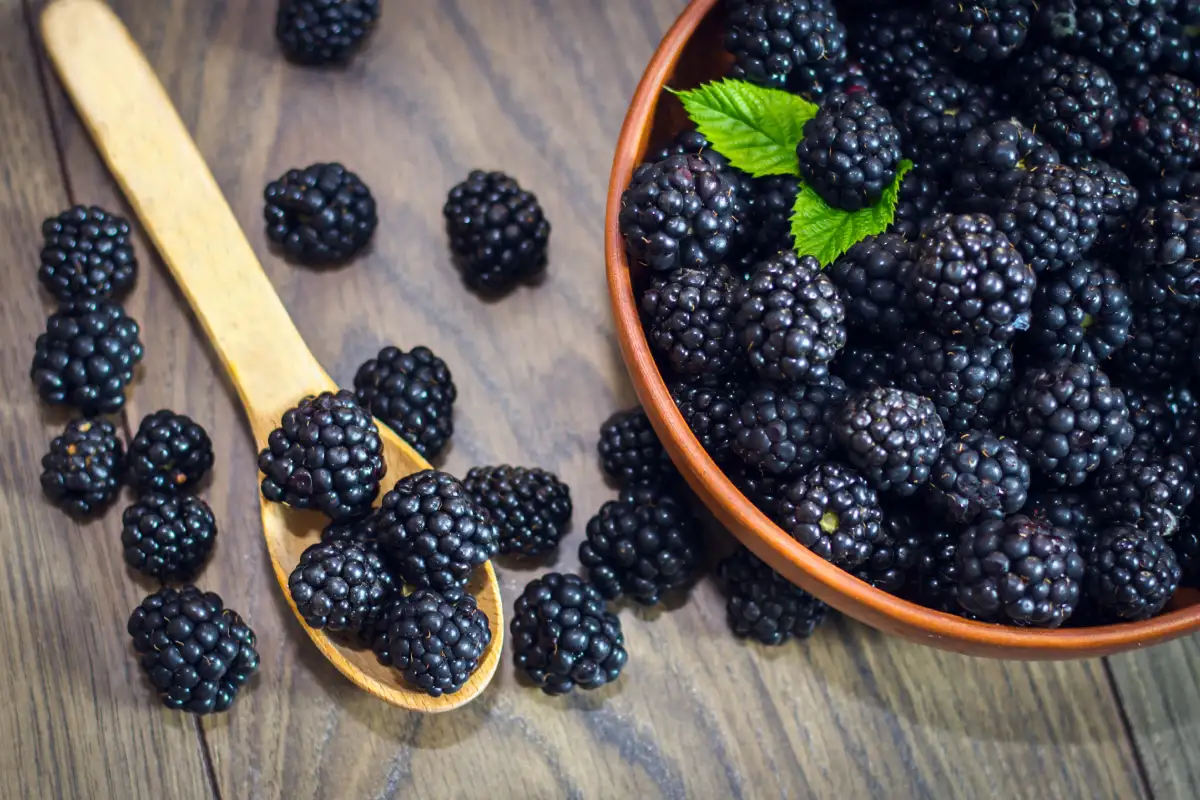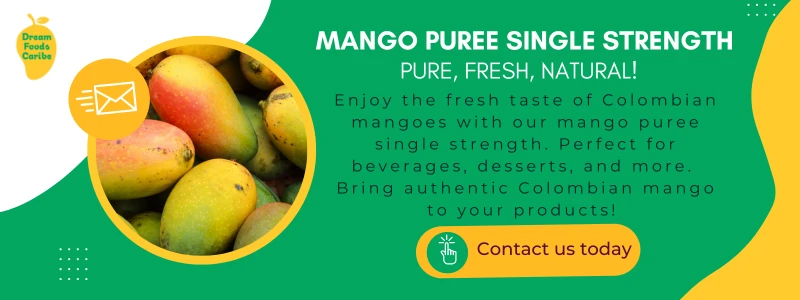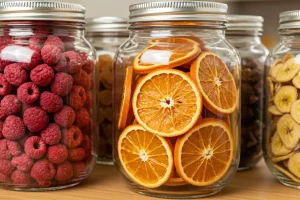Due to its unique and versatile flavor, blackberry fruit purée is conquering the food industry. From desserts to beverages, this ingredient elevates the flavor of any recipe. But what makes it so special? How is it made? And why is it such an attractive option compared to other fruits such as soursop fruit or papaya fruit? Join us to discover how it is a trend-setting ingredient and why it should be an essential part of your products.
Blackberry: versatility in a fruit
Among citrus fruits, it stands out for its sweet taste with a touch of acid, as well as for its nutrients and versatility in the kitchen. Producers and consumers highly appreciate this berry because it enhances the flavor and enriches the nutritional value of any recipe.
Native to the Americas, it is grown in regions with temperate climates. This characteristic makes it a common ingredient in a variety of traditional dishes.
Experts suggest including it in the daily diet in various ways. For example (Bustos, 2024):
- Fresh fruit.
- Smoothies.
- Juices.
- Salads.
- Desserts.
Therefore, adaptability lies not only in its flavor and color. It also lies in its capacity to adapt to different types of products.
Blackberry fruit purée production processes
The production and market for blackberries is growing worldwide. However, because they are highly perishable and last only a short time when fresh, producers need to process or freeze them to maintain their quality (Petković et al., 2024).
Therefore, various processes for their production and preservation are born. These are as follows.
Blackberry fruit selection and washing.
Producers carefully select ripe and fresh fruits because the quality of the purée largely depends on the condition of the fruits. They meticulously wash the blackberries to eliminate impurities, dust, and any chemical residues.
Shredding
Once cleaned, producers crush the blackberries using special equipment to break down the cell walls and release the juice and solids. This step is crucial for obtaining a homogeneous mixture that they will further process to remove unwanted parts (Petković et al., 2024).
Extraction and filtration
At this point, the purée of this fruit goes through a filtering process to remove seeds, skins, and other unwanted residues. This is a step that ensures that it has a smooth and uniform texture, suitable for various industrial applications (Petković et al., 2024).
Thermal processing or preservation
Depending on the method of choice, the purée may undergo thermal preservation techniques such as pasteurization to ensure the safety of the product by eliminating microorganisms. Alternatively, cold preservation processes such as freezing can be used (Petković et al., 2024).
Consistency adjustment
During processing, producers can adjust the consistency of the purée, depending on its end use. They achieve this by controlling the amount of water retained in the product and its concentration. In some cases, they use techniques such as partial drying to obtain a more concentrated purée (Pucel et al., 2021).
Packaging and storage
Finally, the purée is packaged under hygienic conditions and stored under controlled conditions for distribution. This process ensures that the purée retains its antioxidant and nutritional properties (Petković et al., 2024).
Applications and trends of blackberry fruit purée.
Blackberry fruit purée has a variety of uses in the food industry. Here are some of the main ones:
- In yogurt, it adds flavor, color, and texture. Its balanced acidity makes it an exceptional complement to dairy products.
- This fruit and purée keep well at low temperatures, making it perfect for frozen products, such as ice cream. In addition, its color makes it eye-catching in these preparations (Petković et al., 2024).
- It is a fundamental ingredient in the preparation of jams. Its high natural pectin content contributes to thickening the mixture without the addition of other thickening agents (Meredith, 2019).
- In smoothies, juices, and cocktails, blackberry fruit purée provides an intense flavor with nutritional benefits (Barco et al., 2024).
Advantages compared to other fruits
Regarding this, you can find multiple advantages. For example:
- Flavor: the combination of sweetness and acidity of blackberries makes them ideal to complement and enhance other flavors. Unlike fruits that are mostly sweet or acidic.
- Preservation: blackberry purée usually retains its color and flavor even after processing. This is a positive point, as it makes the purée more attractive for products that require prolonged storage.
- Versatility: unlike many other fruits that producers use for specific recipes, combinations, and applications, they can adapt blackberry purée to both sweet and savory preparations.
In short, blackberry fruit purée is distinguished from other fruit purées by its balanced acidity, which enhances flavors without dulling them. So, if you are looking for high-quality ingredients that meet the demands of today’s market, Dream Foods offers purées made to the strictest standards. Find out how this purée can transform your next culinary creation!
References
- Barco, Y., Niu, L., Zhang, J., Yang, W., and Liu, Y. (2024). Bebidas de frutos rojos: desde bioactivos hasta propiedades antidiabéticas y tecnología de procesamiento de bebidas. Food Frontiers, 4(2).
- Bustos, J. (2024, August 7). Conozca la fruta considerada un secreto natural para no tener arrugas y fortalecer sus músculos. Infobae.
- Meredith, L. (2019, May 24). Las mejores frutas ricas en pectina para hacer jaleas, mermeladas y conservas. The Spruce Eats.
- Petković, M., Miletić, N., Pantelić, V., Filipović, V., and Mitrović, O. (2024). Physical and chemical properties of convective- and microwave-dried blackberry fruits grown using organic procedures. Foods, 13(5), 791.
- Pucel, N., Sarkar, D., Labbe, R., Khanongnuch, C., and Shetty, K. (2021). Improving health targeted food quality of blackberry: Pear fruit synergy using lactic acid bacterial fermentation. Frontiers in Sustainable Food Systems, 5.
- Revista Maxi Online. (2019, October 7). Mora, la baya más versátil.







